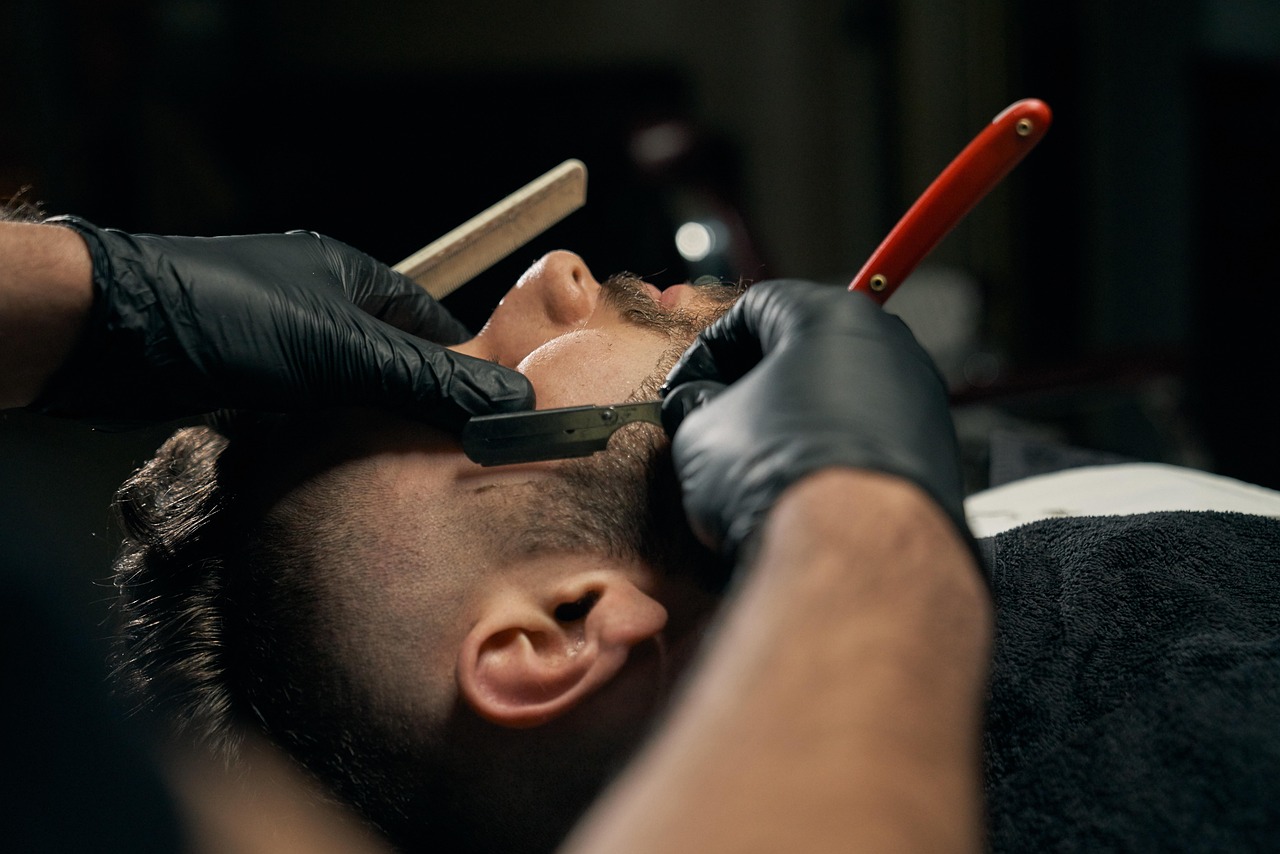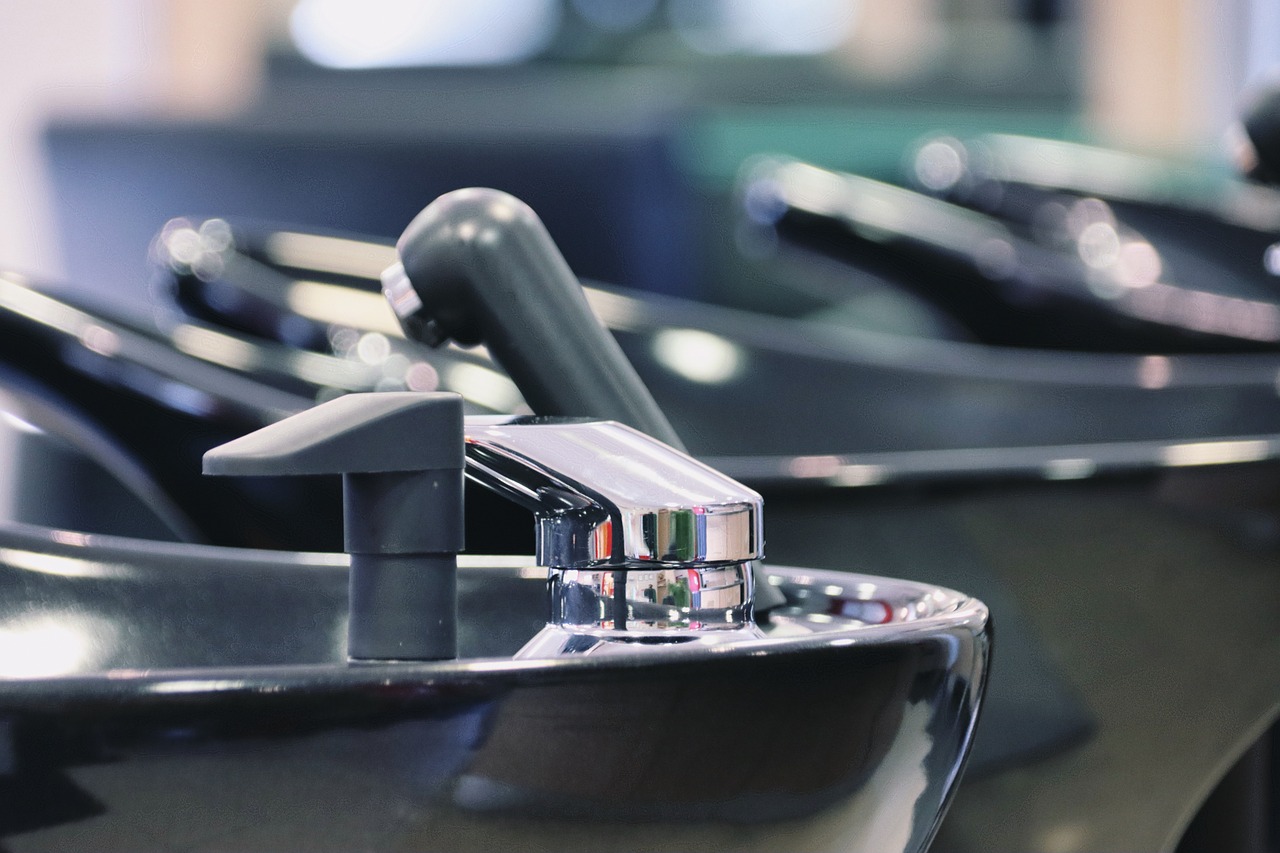This article offers a detailed overview of the hair transplantation process, guiding patients through their experience, from the initial consultation to post-operative care. Understanding this journey can alleviate anxiety and provide clarity on what to expect.
Understanding Hair Transplantation
Hair transplantation is a surgical procedure that relocates hair follicles from a donor site to areas experiencing hair loss. Gaining insight into this process is essential for anyone considering this treatment.
Initial Consultation: What to Expect
During your first visit, you will undergo a comprehensive consultation where the physician will evaluate your hair loss and discuss personalized treatment options.
- Assessing Your Hair Loss: The doctor will analyze the pattern and severity of your hair loss to determine the best approach for your situation.
- Medical History Review: A thorough review will help identify any health issues that might influence the procedure’s success.
- Setting Realistic Expectations: The physician will clarify what results you can realistically anticipate, ensuring clear communication about outcomes.
Choosing the Right Procedure
There are multiple hair transplantation techniques available, including Follicular Unit Extraction (FUE) and Follicular Unit Transplantation (FUT). Understanding these methods is crucial for making an informed decision.
Pre-Operative Preparations
Before surgery, specific preparations are necessary to ensure a successful outcome. This includes adhering to the clinic’s pre-operative instructions.
- Medications and Supplements: Avoid medications that may increase bleeding risks prior to the procedure.
- Day of the Surgery: Knowing what to expect on the surgery day can help ease nerves and prepare you mentally.
The Hair Transplant Procedure
Understanding the surgical process can help demystify the experience:
- Local Anesthesia Administration: Local anesthesia ensures your comfort throughout the procedure.
- Harvesting Hair Follicles: The surgeon will extract hair follicles from the donor area using the selected method.
Post-Operative Care and Recovery
Proper care after the procedure is essential for achieving the best results:
- Managing Discomfort and Swelling: You may experience mild discomfort or swelling, but knowing how to manage these symptoms is key.
- Follow-Up Appointments: Regular follow-ups are important to monitor healing and hair growth progress.
Long-Term Results and Expectations
Understanding the timeline for hair growth and how to maintain results is vital:
- Hair Growth Timeline: Transplanted hair may take several months to grow, so patience is essential.
- Maintaining Your Results: Following a proper hair care regimen will help sustain your results and support hair health.
In conclusion, understanding each stage of the hair transplantation process—from consultation to recovery—can significantly enhance your experience and outcomes. By being well-informed, you can approach your journey with confidence and clarity.

Understanding Hair Transplantation
Hair transplantation is a surgical procedure designed to address hair loss by relocating hair follicles from one area of the body, typically the back or sides of the scalp, to areas experiencing thinning or balding. This method has gained popularity due to its effectiveness and natural-looking results. Before considering this treatment, it is essential to grasp the fundamentals of the procedure, including its techniques, benefits, and potential risks.
There are two primary techniques used in hair transplantation: Follicular Unit Extraction (FUE) and Follicular Unit Transplantation (FUT). In FUE, individual hair follicles are extracted and implanted into the recipient area, while FUT involves removing a strip of scalp and dissecting it into individual grafts. Each method has its advantages and is chosen based on the patient’s specific needs and hair loss pattern.
Why Consider Hair Transplantation?
- Natural Results: When performed by a skilled surgeon, the results can be virtually undetectable.
- Permanent Solution: Unlike temporary solutions like wigs or hairpieces, transplanted hair is permanent.
- Boosts Confidence: Many individuals report increased self-esteem and confidence following the procedure.
However, it is vital to understand the potential risks associated with hair transplantation. These can include infection, scarring, and the possibility of unnatural-looking results if not done correctly. Therefore, thorough research and consultations with qualified professionals are imperative.
In conclusion, hair transplantation is a viable option for those struggling with hair loss. By understanding the procedure and its implications, individuals can make informed decisions about whether this treatment is right for them. Always consult with a certified specialist to discuss your unique situation and expectations.

Initial Consultation: What to Expect
When considering a hair transplant, the initial consultation is a pivotal step in your journey. This appointment sets the foundation for your treatment plan and helps establish a trusting relationship with your healthcare provider.
During your first visit, you will engage in a comprehensive consultation where the doctor will carefully assess your hair loss situation. This involves evaluating the pattern and extent of your hair loss, which is crucial for determining the most effective treatment options available. The doctor will take the time to understand your specific concerns and expectations, ensuring that you feel heard and valued.
In addition to assessing your hair loss, the consultation will include a thorough review of your medical history. This step is essential as it helps the physician identify any underlying health issues that could impact the success of the procedure. You may be asked about your family history of hair loss, any medications you are currently taking, and any previous hair restoration attempts.
Moreover, the doctor will take this opportunity to set realistic expectations regarding the outcomes of the hair transplant. It is vital to have a clear understanding of what results you can anticipate, as this will help you make informed decisions moving forward. The doctor will explain the various techniques available, such as FUE (Follicular Unit Extraction) and FUT (Follicular Unit Transplantation), allowing you to choose the method that best aligns with your goals.
Ultimately, the initial consultation is not just about assessing your hair loss; it is a comprehensive discussion that covers all aspects of your potential hair restoration journey. By the end of this visit, you should feel well-informed and confident about the next steps in your hair transplantation process.
Assessing Your Hair Loss
When you visit a hair transplantation clinic, one of the most crucial steps in the process is the assessment of your hair loss. This evaluation is not just a formality; it plays a significant role in determining the most suitable transplantation method tailored specifically for you.
The doctor will begin by examining the pattern of your hair loss. Different types of hair loss, such as androgenetic alopecia (male or female pattern baldness), have distinct characteristics that can influence treatment options. Understanding the extent of your hair loss is equally important, as it helps in planning how many grafts will be needed and where they will be placed to achieve the most natural-looking results.
During this assessment, the doctor may use various tools and techniques, including:
- Visual Inspection: A close examination of your scalp to identify the areas of thinning and baldness.
- Photography: Taking photographs to document your hair loss and track progress over time.
- Hair Density Measurement: Assessing the density of hair in the donor area to determine how many follicles can be harvested without compromising the appearance.
Additionally, the doctor will likely discuss your medical history and any potential factors that could affect the success of the procedure. This may include previous hair loss treatments, underlying health issues, or family history of hair loss.
By thoroughly evaluating your unique situation, the doctor can recommend the most effective hair transplantation method, whether it be Follicular Unit Extraction (FUE) or Follicular Unit Transplantation (FUT). This personalized approach ensures that you receive the best possible care and the most satisfying results.
In conclusion, the assessment of your hair loss is a critical step in the hair transplantation journey. By providing a comprehensive evaluation, the doctor sets the foundation for a successful procedure that aligns with your goals and expectations.
Medical History Review
is a crucial step in the hair transplantation process. Understanding your medical background can significantly influence the outcome of the procedure and your overall eligibility for surgery.
During your initial consultation, your surgeon will conduct a comprehensive review of your medical history. This assessment is essential for several reasons:
- Identifying Underlying Conditions: Certain medical conditions, such as diabetes, hypertension, or autoimmune disorders, can affect healing and the success of the transplant. By identifying these conditions early, your surgeon can tailor the procedure to minimize risks.
- Medication Considerations: Some medications can interfere with the surgery or the healing process. A detailed medical history allows the surgeon to advise you on any medications you may need to stop or adjust prior to the operation.
- Family History: Understanding your family history regarding hair loss and other health issues can provide insights into your own hair loss pattern and potential complications.
- Previous Surgeries: If you have undergone any prior surgeries, especially related to hair restoration, this information is vital. It helps the surgeon understand what techniques may or may not work for you.
- Allergies: Knowing your allergies, particularly to anesthesia or medications, is critical to ensure your safety during the procedure.
In conclusion, a thorough review of your medical history not only helps in identifying any potential risks but also aids in customizing your treatment plan. This proactive approach is designed to enhance the likelihood of a successful hair transplantation outcome, ensuring that you are well-informed and adequately prepared for the journey ahead.
Setting Realistic Expectations
is a crucial aspect of any medical procedure, particularly in the realm of hair transplantation. During your consultation, the doctor will take the time to thoroughly discuss the expected outcomes of the procedure, ensuring that you have a clear understanding of what you can realistically anticipate.
The doctor will begin by explaining the natural hair growth cycle and how it relates to the results of the transplantation. It’s important to understand that while hair transplants can significantly improve your hair density, the results will not be immediate. Typically, it can take several months for the transplanted hair to begin growing, and even longer to see the full results.
Furthermore, the doctor will review the factors that can influence the success of the procedure, such as:
- Your age: Younger patients may have different expectations compared to older patients.
- The extent of hair loss: The more advanced the hair loss, the more complex the procedure may be.
- Hair type: Different hair types can affect the final appearance of the transplant.
Additionally, the doctor will discuss the limitations of the procedure. For instance, while a hair transplant can restore hair in thinning areas, it cannot prevent future hair loss in untreated areas. This means ongoing care and possibly additional treatments may be necessary to maintain your results.
By setting these realistic expectations, the doctor aims to align your goals with what is achievable through the procedure. This open dialogue is essential for ensuring you feel confident and informed about your decision to proceed with a hair transplant.
In conclusion, understanding what to expect from your hair transplant journey is vital. By having a candid discussion with your doctor, you can embark on this path with clarity and assurance, leading to a more satisfying outcome.
Choosing the Right Procedure
is a critical step in the hair transplantation journey. With various techniques available, understanding the differences between them can empower you to make an informed choice that aligns with your hair restoration goals.
Two of the most popular methods of hair transplantation are Follicular Unit Extraction (FUE) and Follicular Unit Transplantation (FUT). Each technique has its unique advantages and considerations, which are essential to weigh before proceeding.
- Follicular Unit Extraction (FUE): This method involves harvesting individual hair follicles from the donor area using a specialized tool. The main benefits of FUE include:
- Minimally invasive with no linear scarring.
- Quicker recovery time, allowing patients to return to their daily activities sooner.
- Ideal for those who prefer shorter hairstyles.
- Follicular Unit Transplantation (FUT): Also known as the strip method, FUT involves removing a strip of skin from the donor area, from which hair follicles are then extracted. Key points to consider include:
- Potential for a larger number of grafts to be transplanted in a single session.
- May result in a linear scar, which could be a concern for some patients.
- Generally, a more cost-effective option for extensive hair loss.
When deciding between FUE and FUT, it is essential to consider factors such as your hair loss pattern, lifestyle, and personal preferences. Consulting with a qualified hair restoration specialist can provide valuable insights tailored to your specific needs.
Ultimately, the choice of procedure should align with your goals and medical suitability. A thorough understanding of both methods will ensure you feel confident and informed as you embark on your hair restoration journey.

Pre-Operative Preparations
Before undergoing a hair transplantation procedure, it is essential to engage in certain preparations that will help ensure a smooth and successful surgery. These preparations not only facilitate the procedure but also contribute to optimal recovery and results.
One of the first steps in your pre-operative journey is to follow the specific instructions provided by your clinic. These instructions may vary depending on your individual circumstances, but they typically include the following:
- Medications and Supplements: You may be advised to discontinue certain medications, particularly blood thinners and supplements that could increase bleeding. It is crucial to discuss your current medications with your doctor to ensure safety.
- Dietary Restrictions: Your clinic may recommend dietary modifications in the days leading up to the surgery. For instance, avoiding alcohol and caffeine can help minimize complications.
- Hygiene Practices: Maintaining a clean scalp is vital. You may be instructed to wash your hair with a specific shampoo before the procedure to reduce the risk of infection.
- Arranging Transportation: Since the procedure may leave you feeling groggy due to anesthesia, it is advisable to arrange for someone to drive you home after the surgery.
Additionally, it is important to set realistic expectations regarding the outcomes. Discuss your goals with your surgeon, ensuring that you have a clear understanding of what the procedure can achieve.
In summary, thorough pre-operative preparations are key to a successful hair transplantation experience. By adhering to your clinic’s guidelines and maintaining open communication with your healthcare team, you can significantly enhance your chances of achieving desirable results.
Medications and Supplements
play a crucial role in the preparation for a hair transplantation procedure. Before undergoing surgery, it is essential to consult with your healthcare provider about any medications or supplements you are currently taking.
Many patients may not realize that certain medications can significantly affect the outcome of the surgery. Specifically, medications that can increase the risk of bleeding or interfere with the healing process should be avoided. Here are some common categories of medications and supplements that you may need to refrain from:
- Anticoagulants: These blood thinners, such as warfarin or aspirin, can increase bleeding during and after the procedure.
- Non-Steroidal Anti-Inflammatory Drugs (NSAIDs): Ibuprofen and similar medications can also pose a risk by affecting blood clotting.
- Herbal Supplements: Some herbal products, like ginkgo biloba and garlic, may have blood-thinning properties and should be avoided.
- Vitamin E: While beneficial in many ways, high doses of vitamin E can increase bleeding risk.
It is advisable to discuss these medications with your surgeon during the initial consultation. Your doctor will provide specific guidelines on when to stop taking these substances before the surgery. Following their advice is vital for ensuring a safe and successful hair transplant.
In addition to avoiding certain medications, maintaining a healthy lifestyle leading up to the procedure can further enhance your results. This includes staying hydrated, eating a balanced diet, and refraining from smoking or excessive alcohol consumption.
In conclusion, being proactive about your can significantly impact your hair transplantation experience. Always prioritize open communication with your healthcare provider to ensure the best possible outcome.
Day of the Surgery
On the day of your hair transplant, several important steps will take place to prepare you for the procedure. Understanding these steps can significantly ease any anxiety you may feel.
First and foremost, you will arrive at the clinic where a medical team will greet you. They will guide you through the necessary paperwork and ensure that you are comfortable. It is essential to arrive with a clear mind, as this will help you focus on the procedure ahead.
Next, a pre-operative assessment will be conducted. This usually includes a final review of your medical history and a discussion about the procedure. The surgeon will answer any last-minute questions you may have, reinforcing your understanding of what to expect.
- Preparation for Anesthesia: Before the surgery begins, the medical team will prepare you for anesthesia. This is a crucial step to ensure that you remain comfortable throughout the procedure.
- Marking the Donor Area: The surgeon will mark the areas from which hair follicles will be harvested. This is done with precision to ensure optimal results.
- Relaxation Techniques: If you are feeling anxious, the medical staff may suggest some relaxation techniques or provide calming medication to help you settle down.
Once all preparations are complete, you will be taken to the operating room. The atmosphere is typically calm and professional, which can help to alleviate any remaining nerves. Remember that the medical team is there to support you and ensure your safety throughout the procedure.
In conclusion, being informed about the steps on the day of your hair transplant can significantly reduce anxiety. Knowing what to expect helps you feel more in control and ready for the journey ahead. Take a deep breath, trust the process, and look forward to the results!

The Hair Transplant Procedure
Understanding the hair transplant procedure is essential for anyone considering this transformative treatment. This section will provide a detailed overview of what occurs during the surgery, ensuring you are well-informed and prepared.
- Local Anesthesia Administration: Before the surgery begins, the surgeon will administer local anesthesia to the scalp. This ensures that the patient remains comfortable and pain-free throughout the procedure. While you will be awake, the anesthesia will numb the area, allowing for a smooth surgical experience.
- Harvesting Hair Follicles: The next step involves the careful extraction of hair follicles from a donor area, typically the back of the head. There are two primary techniques used for this process:
- Follicular Unit Extraction (FUE): This method involves removing individual hair follicles one by one using a specialized tool. It’s minimally invasive and leaves little to no scarring.
- Follicular Unit Transplantation (FUT): In this method, a strip of scalp is removed, and the hair follicles are dissected from this strip. This technique may leave a linear scar but can be more efficient for larger grafts.
- Preparing the Recipient Area: Once the hair follicles are harvested, the surgeon prepares the recipient area by making tiny incisions where the follicles will be implanted. This step is critical as it determines the angle and direction of hair growth.
- Implanting Hair Follicles: The final stage of the procedure involves placing the harvested hair follicles into the prepared sites on the scalp. The surgeon will ensure that they are positioned to mimic natural hair growth patterns.
Throughout the procedure, the surgical team will monitor your comfort and the progress of the surgery. The entire process can take several hours, depending on the number of grafts being transplanted. After the surgery, patients are provided with post-operative care instructions to promote healing and optimize results.
In conclusion, understanding each step of the hair transplant procedure can significantly reduce anxiety and help you feel more confident about your decision. Being informed empowers you to engage actively in your hair restoration journey.
Local Anesthesia Administration
When you visit a hair transplantation clinic, one of the key components of the procedure is the administration of local anesthesia. This step is critical as it ensures that you are comfortable throughout the entire process. The use of local anesthesia allows you to remain awake and aware, while effectively numbing the areas where the surgery will take place, eliminating any sensation of pain.
Understanding the importance of local anesthesia can help alleviate any anxiety you may feel about the procedure. Many patients are concerned about the discomfort associated with surgical interventions, but the use of local anesthesia is designed specifically to address these worries. It works by blocking nerve signals in the targeted area, making the experience much more manageable.
During the procedure, the surgeon will typically apply the anesthetic using a small needle, which may cause a brief moment of discomfort. However, this is usually minimal compared to the relief it provides. Once the anesthesia takes effect, patients can expect to feel pressure and movement but no pain, allowing the surgeon to perform the necessary steps with precision.
In addition to enhancing comfort, local anesthesia also allows for a quicker recovery time. Since you are awake and alert during the procedure, you can follow the surgeon’s instructions and ask questions as needed, contributing to a more interactive experience. After the surgery, the effects of local anesthesia will gradually wear off, and you may experience some mild discomfort, which can be managed with prescribed pain relief.
In conclusion, local anesthesia is a vital aspect of the hair transplantation process, ensuring that you remain comfortable and pain-free. By understanding its role and effects, you can approach your hair transplant with confidence, knowing that your comfort is a top priority.
Harvesting Hair Follicles
When it comes to hair transplantation, one of the most critical stages is the harvesting of hair follicles. This process is essential for ensuring that the transplanted hair will thrive and grow in the recipient area. Understanding how this step is performed can help alleviate any concerns you may have about the procedure.
During the harvesting phase, the surgeon will utilize specialized techniques to extract hair follicles from the donor area, which is typically located at the back or sides of the scalp. The choice of technique largely depends on the specific method of hair transplantation you have selected, with the two most common approaches being Follicular Unit Extraction (FUE) and Follicular Unit Transplantation (FUT).
- Follicular Unit Extraction (FUE): This technique involves the use of a punch tool to individually extract hair follicles. It is less invasive and leaves minimal scarring, allowing for a quicker recovery.
- Follicular Unit Transplantation (FUT): In this method, a strip of skin containing hair follicles is removed from the donor area. The follicles are then dissected and prepared for transplantation. This method may result in a linear scar but can yield a larger number of grafts in a single session.
The surgeon will take great care to ensure that the harvested follicles are healthy and viable. This involves assessing the quality of the hair and the surrounding tissue to maximize the success rate of the transplantation. After harvesting, the follicles are preserved in a special solution to maintain their integrity until they are implanted into the recipient area.
Ultimately, the harvesting of hair follicles is a meticulous process that plays a significant role in the overall success of a hair transplant. By understanding this phase, patients can feel more confident and informed about what to expect during their hair restoration journey.

Post-Operative Care and Recovery
After undergoing a hair transplantation procedure, proper care is absolutely essential to ensure optimal results. Understanding the nuances of post-operative care will not only facilitate a smoother recovery but also enhance the effectiveness of the treatment.
Immediately following the surgery, you may experience some discomfort, swelling, or redness in the treated areas. It’s crucial to follow your surgeon’s instructions regarding pain management and to adhere to prescribed medications. Ice packs can be beneficial in reducing swelling, and your doctor may recommend specific over-the-counter pain relief options.
One of the most important aspects of post-operative care is to avoid touching or scratching the transplanted areas. This can disrupt the healing process and affect the growth of the new hair follicles. Instead, pat the area gently with a clean cloth if necessary.
Washing Your Hair
- Typically, you will be advised to wait at least 48 hours before washing your hair.
- When you do wash your hair, use a mild shampoo and avoid vigorous scrubbing.
- Gently rinse the area to avoid dislodging any transplanted follicles.
Follow-Up Appointments
Regular follow-up appointments with your surgeon are critical. These visits allow your doctor to monitor your healing process and assess the growth of the transplanted hair. During these appointments, your doctor can also address any concerns you may have and adjust your care plan as needed.
Finally, remember that patience is key. Hair growth after a transplant can take several months, and managing your expectations during this period is vital. Following the post-operative care guidelines diligently will significantly contribute to the success of your hair restoration journey.
In conclusion, understanding and implementing effective post-operative care is essential for achieving the best possible results from your hair transplant. By following your surgeon’s advice and taking proactive steps in your recovery, you can look forward to a successful hair restoration experience.
Managing Discomfort and Swelling
After undergoing a hair transplant, it is not uncommon for patients to experience discomfort and swelling in the treated areas. Understanding how to effectively manage these symptoms is crucial for a smoother recovery process. This section will guide you through practical steps to alleviate discomfort and minimize swelling, enabling you to focus on your healing journey.
Understanding Post-Operative Symptoms
- Discomfort: This may manifest as a mild ache or tenderness in the scalp, typically manageable with prescribed pain relief.
- Swelling: Swelling commonly occurs around the forehead and eyes, often peaking around the second or third day post-surgery.
Steps to Manage Discomfort
- Follow Medication Instructions: Your surgeon will likely prescribe pain relief medications. It’s important to take these as directed to keep discomfort at bay.
- Rest and Relax: Ensure you get plenty of rest. Avoid strenuous activities that may exacerbate discomfort or swelling.
- Cold Compress: Applying a cold compress to the forehead can help reduce swelling and numb any discomfort. Ensure the compress is not too cold and is wrapped in a cloth to protect your skin.
Additional Tips for Reducing Swelling
- Keep Your Head Elevated: Sleeping with your head elevated for the first few nights can help minimize swelling.
- Avoid Heat Exposure: Stay away from hot showers, saunas, or direct sunlight for several days post-surgery to prevent increased swelling.
- Stay Hydrated: Drinking plenty of water can support your body’s healing processes.
In conclusion, while discomfort and swelling are normal after a hair transplant, employing these strategies can significantly ease your recovery. Always consult your surgeon if symptoms persist or worsen, as they can provide tailored advice and interventions.
Follow-Up Appointments
are a vital component of your hair transplantation journey, serving as checkpoints to assess your healing and the progress of your newly transplanted hair. These appointments are not just routine; they are designed to ensure that your recovery is on track and that the hair follicles are integrating well into their new environment.
During these follow-up visits, your surgeon will conduct a thorough examination of the transplant site. This includes checking for any signs of infection, assessing the health of the scalp, and evaluating the growth of the transplanted hair. Regular monitoring allows the medical team to address any concerns early on, which can significantly influence the overall success of the procedure.
- Frequency of Appointments: Typically, follow-up appointments are scheduled at regular intervals, such as one week, one month, and three months after the procedure. This schedule may vary based on individual healing rates and specific recommendations from your surgeon.
- What to Expect: At each appointment, you can expect a detailed assessment of your hair growth. Your surgeon may also provide guidance on how to care for your hair and scalp during the recovery process.
- Addressing Concerns: If you have any questions or concerns regarding your recovery, these appointments are an excellent opportunity to discuss them with your surgeon. Open communication is key to a successful recovery.
In addition to physical evaluations, these appointments also serve to reinforce patient education. Your surgeon may discuss lifestyle changes or treatments that could enhance your results, ensuring that you are well-informed about maintaining the health of your hair.
Ultimately, commitment to follow-up appointments is essential for achieving the best possible outcome from your hair transplant. By staying engaged with your healthcare provider, you can ensure that your healing process is monitored effectively, leading to a more successful and satisfying result.

Long-Term Results and Expectations
Understanding the timeline for hair growth and the final results is crucial for setting your expectations after undergoing a hair transplantation procedure. Many patients may feel anxious about the outcome, but being informed can significantly ease these concerns.
- Initial Shedding Phase: After the procedure, it is common for transplanted hair to enter a shedding phase within the first 2-3 weeks. This can be alarming, but it is a normal part of the process as the hair follicles adjust to their new environment.
- New Hair Growth: Typically, noticeable hair growth will begin around the 3 to 4-month mark. At this stage, patients can expect fine, thin hairs to start emerging, which will gradually thicken over time.
- Full Results: Most patients will see significant improvements in hair density and coverage by the 6 to 12-month period. It is essential to remain patient, as the final results can take up to a year to fully manifest.
During this timeline, it is important to maintain realistic expectations. Hair growth varies from person to person, influenced by factors such as genetics, age, and overall health. Additionally, following the post-operative care instructions provided by your clinic can greatly affect the success of the transplant.
To maximize and maintain your results, consider incorporating a proper hair care regimen that includes gentle cleansing and possibly the use of topical treatments recommended by your healthcare provider. Regular follow-up appointments will also help ensure that your hair is growing as expected and that any concerns can be addressed promptly.
In conclusion, understanding the hair growth timeline and setting realistic expectations are key components of the hair transplant journey. By being informed and proactive, you can enhance your experience and achieve the best possible results.
Hair Growth Timeline
After undergoing a hair transplant, many patients are eager to see the results. However, it’s important to recognize that hair growth following a transplant is a gradual process that can take several months. Understanding the timeline can help you remain patient and optimistic throughout your recovery.
- Weeks 1-2: In the initial weeks post-surgery, you may notice some shedding of the transplanted hair. This is completely normal and is often referred to as “shock loss.” It occurs as the hair follicles adjust to their new environment.
- Weeks 3-4: By this time, the shedding should stabilize. You might start to see tiny hair sprouts emerging from the transplanted follicles. These are often referred to as “vellus hairs” and are a sign that the follicles are beginning to function properly.
- Months 2-3: The new hair growth becomes more noticeable. Patients typically see an increase in hair density during this period. However, the hair may still appear thin and fine at this stage.
- Months 4-6: Significant improvements in hair thickness and length are usually observed. The transplanted hair is beginning to blend in with existing hair, creating a more natural appearance.
- Months 6-12: Most patients will see the final results of their hair transplant by the end of the first year. At this point, hair should be fuller and healthier, with a natural growth pattern.
Throughout this timeline, it’s essential to follow your surgeon’s post-operative care instructions to promote optimal hair growth. Regular follow-up appointments will help monitor your progress and address any concerns that may arise.
In summary, while the process of hair growth after a transplant can be lengthy, understanding what to expect can help you stay positive and focused on the end goal: a fuller head of hair.
Maintaining Your Results
After undergoing a hair transplant, is crucial to ensure the longevity and health of your new hair. A consistent and effective hair care regimen, along with possible supplementary treatments, can significantly support the vitality of your hair. Here are some essential strategies to help you maintain your results:
- Follow a Hair Care Routine: Establishing a daily hair care routine is vital. Use gentle shampoos and conditioners designed for sensitive or post-transplant hair. Avoid harsh chemicals that can damage your new follicles.
- Regular Scalp Care: Keeping your scalp clean and moisturized is essential. Consider using natural oils like coconut oil or jojoba oil to nourish the scalp and promote healthy hair growth.
- Avoid Heat Styling: Minimize the use of heat styling tools such as blow dryers, straighteners, and curling irons. Excessive heat can weaken hair and lead to damage.
- Healthy Diet: A balanced diet rich in vitamins and minerals can enhance hair health. Foods high in omega-3 fatty acids, biotin, and protein are particularly beneficial.
- Stay Hydrated: Drinking plenty of water is essential for overall health and can positively impact hair growth and strength.
- Consider Supplementation: Discuss with your doctor the possibility of taking supplements like biotin or vitamin D to support hair health.
- Regular Follow-ups: Attend scheduled follow-up appointments with your surgeon. These visits are crucial for monitoring your hair growth and addressing any concerns.
By adhering to these guidelines, you can significantly enhance the durability of your hair transplant results. Remember, patience is key, as hair growth takes time. Maintaining a positive mindset and following these practices will help you achieve the best outcomes from your hair restoration journey.
Frequently Asked Questions
- What is a hair transplant?
A hair transplant is a surgical procedure that involves moving hair follicles from a donor area to areas of thinning or no hair. It’s a popular solution for hair loss and can provide natural-looking results.
- Is the hair transplant procedure painful?
Most patients report minimal discomfort during the procedure due to the use of local anesthesia. After the procedure, some mild discomfort or swelling may occur, but this can typically be managed with over-the-counter pain relief.
- How long does it take to see results after a hair transplant?
While some initial results can be seen within a few months, full results typically take about 6 to 12 months to manifest. Patience is key as hair growth can be a gradual process.
- Are there any risks associated with hair transplants?
Like any surgical procedure, hair transplants come with potential risks, including infection, scarring, and unnatural-looking hair growth. However, these risks are generally low when performed by a qualified surgeon.
- What should I do for post-operative care?
Post-operative care is crucial for optimal results. Follow your surgeon’s instructions, which may include avoiding strenuous activities, keeping the scalp clean, and using prescribed medications to aid recovery.












